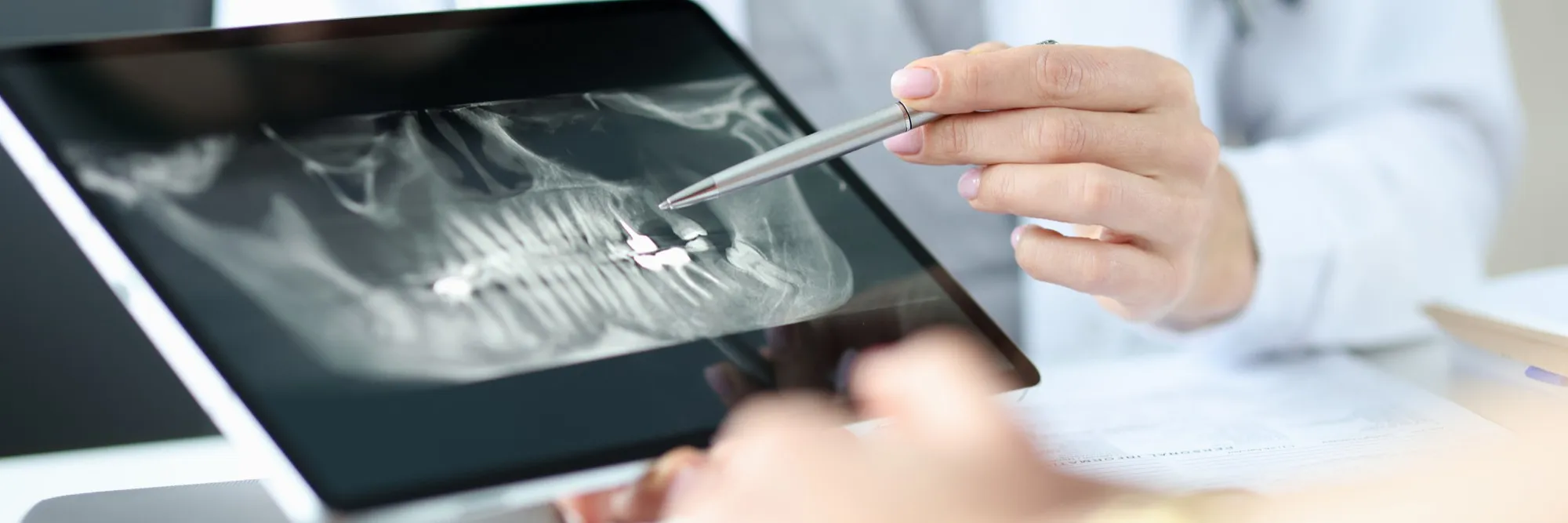Digital Dentistry?
Digital Dentistry is a branch of dentistry that uses modern technologies and digital equipment to diagnose, plan, and treat dental diseases and disorders. This field has evolved significantly in recent years, improving the accuracy, efficiency, and speed of dental treatments, while also offering better possibilities for creating dental restorations and treatment plans.
Digital dentistry uses a wide range of technologies and devices that enable the creation of 3D images, treatment planning, and the creation of dental restorations with high precision. Some of the most commonly used technologies in digital dentistry are:

Benefits of Digital Dentistry
- Higher accuracy: Digital technologies, such as intraoral scanning and 3D planning, enable much more accurate and personalized results in dental treatments.
- Reduction of time and assistance for faster procedures: With the use of technologies like CAD/CAM, customized restorations (crowns, fillings, etc.) can be created faster and with less assistance from laboratories.
- A more pleasant experience for patients: With the use of digital scans and X-rays, the processes become faster and less painful for patients, reducing sensitivity and common discomforts.
- Customized and data-driven treatments:: Digital dentistry can provide much more personalized treatments by using data directly related to the patients’ needs.
- Monitoring and assistance in long-term treatments: Digital technologies help track treatments and ensure that patients have access to the necessary information throughout the healing process.
Types of Digital Dentistry?
- 3D Tooth Scanning (Intraoral Scanners) Instead of using traditional impression materials to create a mold of the teeth, dentists use advanced intraoral scanning devices to create accurate and detailed digital images of the mouth and teeth. This can be done very quickly and without the need for an uncomfortable experience for the patient.
- Digital Radiography: Digital dental X-rays use X-rays to create internal images of the teeth and surrounding structures. These images can be stored and analyzed with greater accuracy, offering more opportunities for diagnosing issues such as cavities, infections, and problems with the teeth and bones.
- CAD/CAM (Computer-Aided Design/Computer-Aided Manufacturing): This is a process used to create and produce dental restorations such as crowns, fillings, and other prosthetics. With the help of CAD/CAM, dentists can create accurate models of the teeth and plan treatments through software that simulates how the final result will look. Then, advanced CAM machines can manufacture the restorations directly from the selected materials, such as porcelain or composite materials, with high precision.
- Digital Implantology: For dental implants, digital planning can assist in placing the implant with high accuracy using advanced images and 3D maps of the oral structures. With the help of software, dentists can create a detailed plan that precisely determines where the implant should be placed, reducing risks and aiding in a faster recovery.
Dental Laser: Some dental procedures can be performed more easily and effectively using laser technology. Lasers can be used for treating gum issues, dental surgery, tumor removal, and help stop bleeding during surgical procedures. The use of lasers can also help reduce pain and recovery time after surgery.- Therapy with the Assistance of Digital Technology: There are also technologies that help in healing and cleaning teeth using special lights or stimuli to enhance recovery after surgical procedures or other treatments.
- Virtual Treatment Simulation: Dentists can use software to create 3D simulations of dental treatments, helping patients understand how their teeth will look after treatment. This can include simulating potential restorations, such as crowns, fillings, or orthodontics (braces).
- Digital Orthodontics (Digitization of Orthodontic Treatment): With the help of technologies such as clear aligners, patients can view and plan orthodontic treatments through 3D images and software that create the most suitable plan for each individual.
- Patient Data Management: Digital dentistry includes the use of information management systems that enable the secure storage of medical history, dental images, and other patient documents in an easily accessible manner. This helps in monitoring the progress of treatments and maintaining data for future procedures.
- Digital Communication with Patients: With the development of technology, some clinics use applications and online platforms to communicate with patients, providing quick advice, informing them about possible treatments, or sending recommendations and instructions after procedures.
